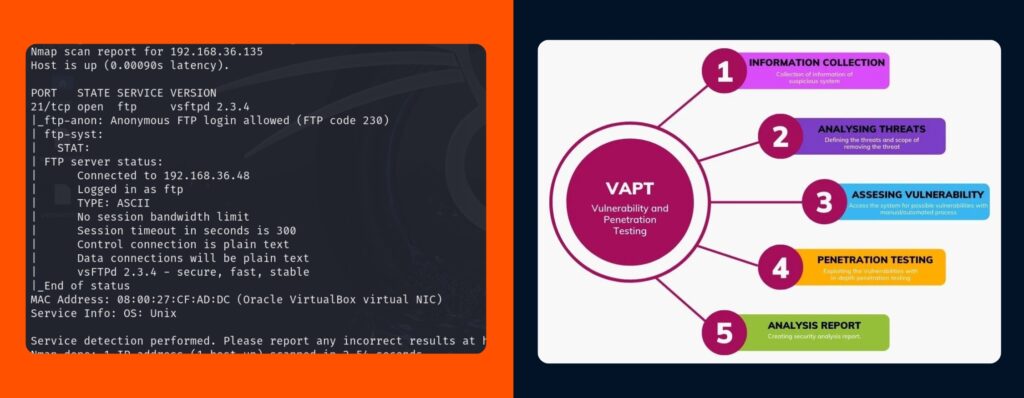Introduction
In the digital age, mobile applications have actually transformed how we interact with the world around us. Whether you're purchasing food, booking a ride, or engaging in social networks, apps function as our gateways to benefit and connection. Nevertheless, developing a successful app is no little feat. It includes a meticulous journey from concept to release that needs an understanding of numerous disciplines including web advancement services, SEO services, branding, and more. In this detailed guide, we will explore the complex steps associated with app advancement and what it takes to turn an idea into a successful product.
From Idea to Introduce: The Journey of Successful App Development
Creating an app starts with a brilliant concept. However how do you change that seed of inspiration into a completely practical application that users will love? The journey involves a number of phases:
1. Ideation: Crafting Your App Concept
Before diving into advancement, it's vital to expand your app idea. Start by asking these concerns:
- What issue does your app solve? Who is your target audience? What makes your app unique?
By answering these questions, you'll start forming a clearer photo of your app's purpose and audience.
2. Marketing Research: Understanding Your Competition
Once you have your concept nailed down, performing extensive marketing research is important. This phase includes:
- Analyzing competitors Identifying trends Understanding user preferences
Utilizing tools like Google Trends can help evaluate interest in comparable applications and recognize spaces in the market.
3. Specifying Features: Structure a Function Set
With insights from marketing research, it's time to produce a list of functions for your app. Think about utilizing the MoSCoW approach (Must have, Need to have, Might have, Will not have) to prioritize functionalities effectively.
Essential Functions May Include:
- User authentication Push notifications Social sharing capabilities In-app purchases
4. Developing User Personas: Understanding Your Audience
User personas help in understanding who will be utilizing your app and what their needs are. Establish profiles based upon demographics, behaviors, and discomfort points.
Example User Personality:
|Personality|Age|Occupation|Needs|| -------------|-----|-------------|--------------------------------|| Tech-Savvy Sarah|28|Marketing Professional|Quick access to analytics|| Hectic Dad|40|Sales Manager|Easy meal planning|

5. Wireframing: Visual Blueprint of Your App
Wireframing allows you to produce a visual layout of your app without getting bogged down by design information. Usage tools like Balsamiq or Sketch for this process.
Key Aspects in Wireframes:
- Navigation flow Screen layouts Interaction buttons
6. Prototyping: Bringing Your Concept to Life
A model offers an interactive experience without full performance. This stage helps collect early feedback before carrying on to real development.
Tools for Prototyping Include:
- Figma Adobe XD InVision
7. Choosing the Right Tech Stack
Selecting the ideal technologies for developing your application is pivotal. Some popular stacks consist of:
For Frontend Development:
- React Native Flutter
For Backend Development:
- Node.js Ruby on Rails
8. App Design: Aesthetic Satisfies Functionality
Design plays a considerable function in user engagement; for this reason hiring expert website design & & advancement services can make a huge distinction here.
Design Principles To Think about:
Consistency across interfaces Intuitive navigation Clear call-to-action buttons9. Development Methodologies: Agile vs Waterfall
Choosing in between Agile and Waterfall methodologies can affect how efficiently your task progresses.
Agile Approach Benefits:
- Flexibility in modifications Continuous screening
Waterfall Technique Benefits:
- Structured phases Clear timelines
10. Checking Stages: Making Sure Quality Assurance
Quality assurance (QA) is vital throughout app development as it reduces bugs and guarantees smooth performance throughout devices.
Types of Evaluating Include:
Functional Testing Usability Testing Performance Testing11. Beta Screening: Gathering Feedback from Genuine Users
Before introducing openly, beta testing can offer important insights from genuine users about possible issues or wanted improvements.
Benefits of Beta Testing Include:
- Real-world usage feedback Identification of bugs not captured during QA screening
12. Getting Ready For Launch Day!
Launch day is typically demanding however exciting! Here are some steps to make sure everything goes smoothly:
Prepare marketing products (videos, social posts) Ensure all employee know their functions Monitor server capability if expecting high traffic13. Digital Marketing Company Strategies for Promotion
Once released, promoting your app through efficient marketing methods ends up being essential for visibility and downloads.
Strategies May Consist of:
Influencer Partnerships Paid Advertisements on Social network Search Engine Optimization (SEO)14.E-Commerce Advancement Integration
If suitable, integrating e-commerce functionalities can considerably improve user experience and revenue potential.
Key Includes Might Include:
Shopping Cart functionality 2.In-app payment choices 3. Discount rate code integrations15. Branding Your App Effectively
Branding isn't practically having a cool logo; it has to do with producing an emotional connection with users.
Elements of Effective Branding Include:
1. Cohesive color schemes 2. A relatable brand name voice 3. An interesting story behind the brand name

16. App Shop Optimization (ASO)
Just like SEO for sites, ASO is important for enhancing visibility within app stores.
Key ASO Techniques:
1. Keyword optimization in title and description
2.High-quality screenshots
3. App reviews management
17. Preserving User Engagement Post-launch
Keeping users engaged post-launch assists retain clients long-lasting.
Techniques To Consider:
1. Push notices for updates 2. Regular content updates
3. User studies for feedback
18. Examining Metrics Post-launch
Tracking metrics offers insight into user habits which assists in making data-driven decisions moving forward.
Key Metrics Can Consist of:
1. Daily Active Users (DAU) 2. Kept Users over time
3. User acquisition expense
19. Version Based Upon Feedback
Listening to user feedback allows you to make required changes that might considerably enhance user satisfaction.
Points To Remember:
1. Never ever overlook useful criticism
2. Want to pivot based upon user needs
3. Release incremental updates routinely
20. Scaling Your App Over Time
As need grows or moves happen in technology trends, scaling becomes essential if you want durability in the market space.
Steps To Scale Efficiently May Consist of:
1. Adding brand-new functions based on user requests
https://embtelsolutions.com/contact-us/ 2. Broadening into worldwide markets
3. Collaborations with other brands
21. Learning from Rivals & Market Trends
Staying notified about industry patterns keeps your company agile versus competition while likewise attracting new users!
Ways To Stay Updated:
1. Follow industry leaders online
2. Register for tech news outlets
3. Join appropriate online forums
22. Revisiting Branding Aspects Periodically
Over time as trends develop so must elements related directly back towards branding aspects! Regularly reviewing elements such as logos/colors and so on, ensures they remain fresh while resonating well amongst audiences!
FAQs About Effective App Development
Q1: What are the initial steps I should take when thinking about app development?
A1: Start with ideation followed by comprehensive marketing research and defining features customized around potential users' needs!
Q2: How do I know if my app concept has potential?
A2: Conduct marketing research examining competitors' offerings while likewise gauging interest levels amongst prospective users by means of studies or online polls!
Q3: Is it essential to hire professionals for design & & development?
A3: YES! While DIY solutions exist expertise brings cohesion along ensuring higher quality results leading towards success!
Q4: What role does digital marketing play post-launch?
A4: Marketing techniques become vital when introduced-- without proper outreach efforts presence reduces leading towards lower downloads!
Q5: How frequently should I upgrade my application?
A5: Regular updates addressing both bugs & brand-new functions keep users engaged increasing retention rates with time! Goal & monthly at minimum!
Q6: Is scaling actually essential after initial success?
A6: Definitely-- adapting development techniques allows longevity throughout ever-changing marketplace characteristics preserving importance amongst competition!
Conclusion
The journey from concept to release involves multiple stages that require attention to information across various disciplines consisting of digital marketing company cooperation and web design & development expertise. By following this guide carefully-- focusing not just on performance however also aesthetic appeals-- you'll be fully equipped toward turning your dream application into reality while navigating difficulties with confidence! Remember-- the road might be long however each step taken leads better towards attaining success within competitive landscapes-- a venture worth investing time & energy into today!